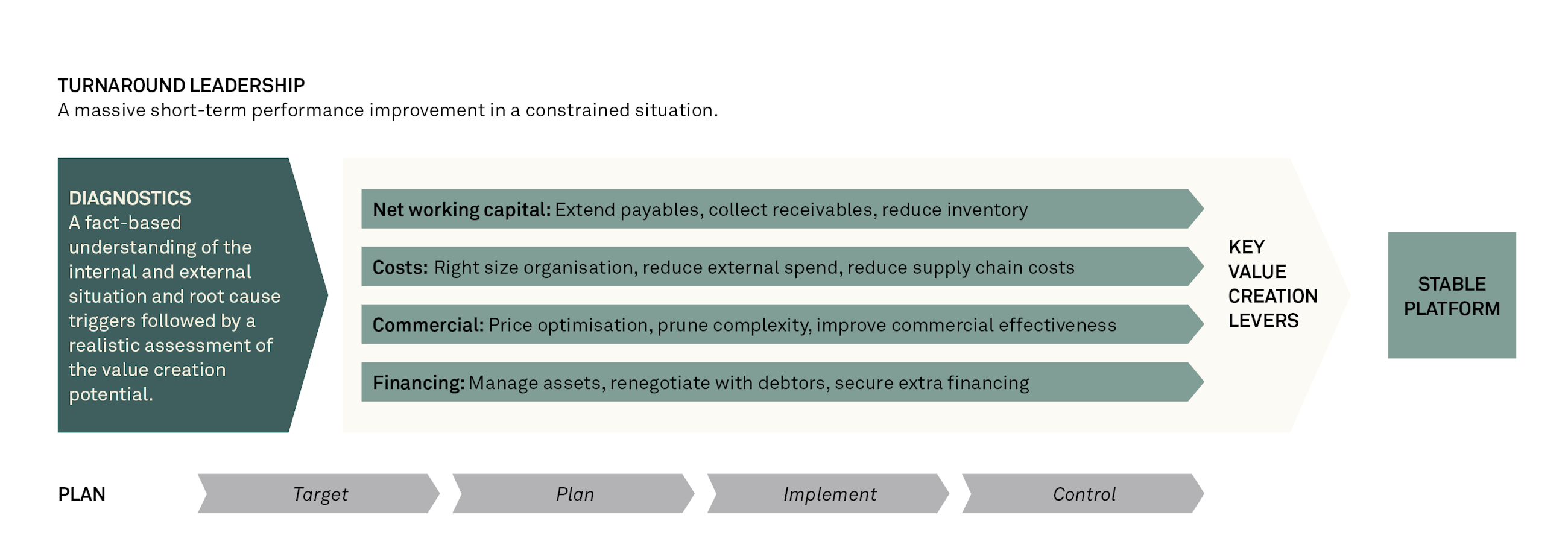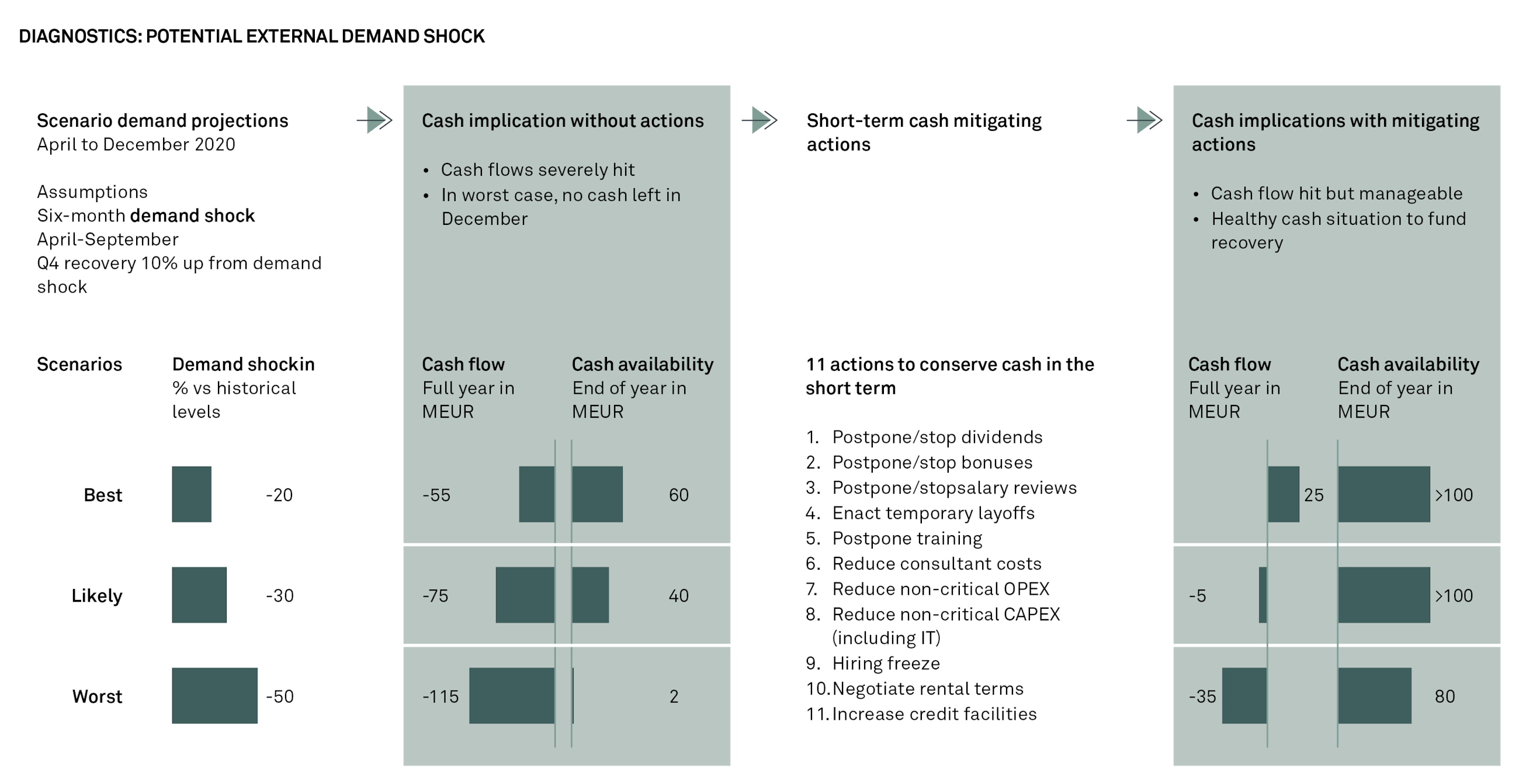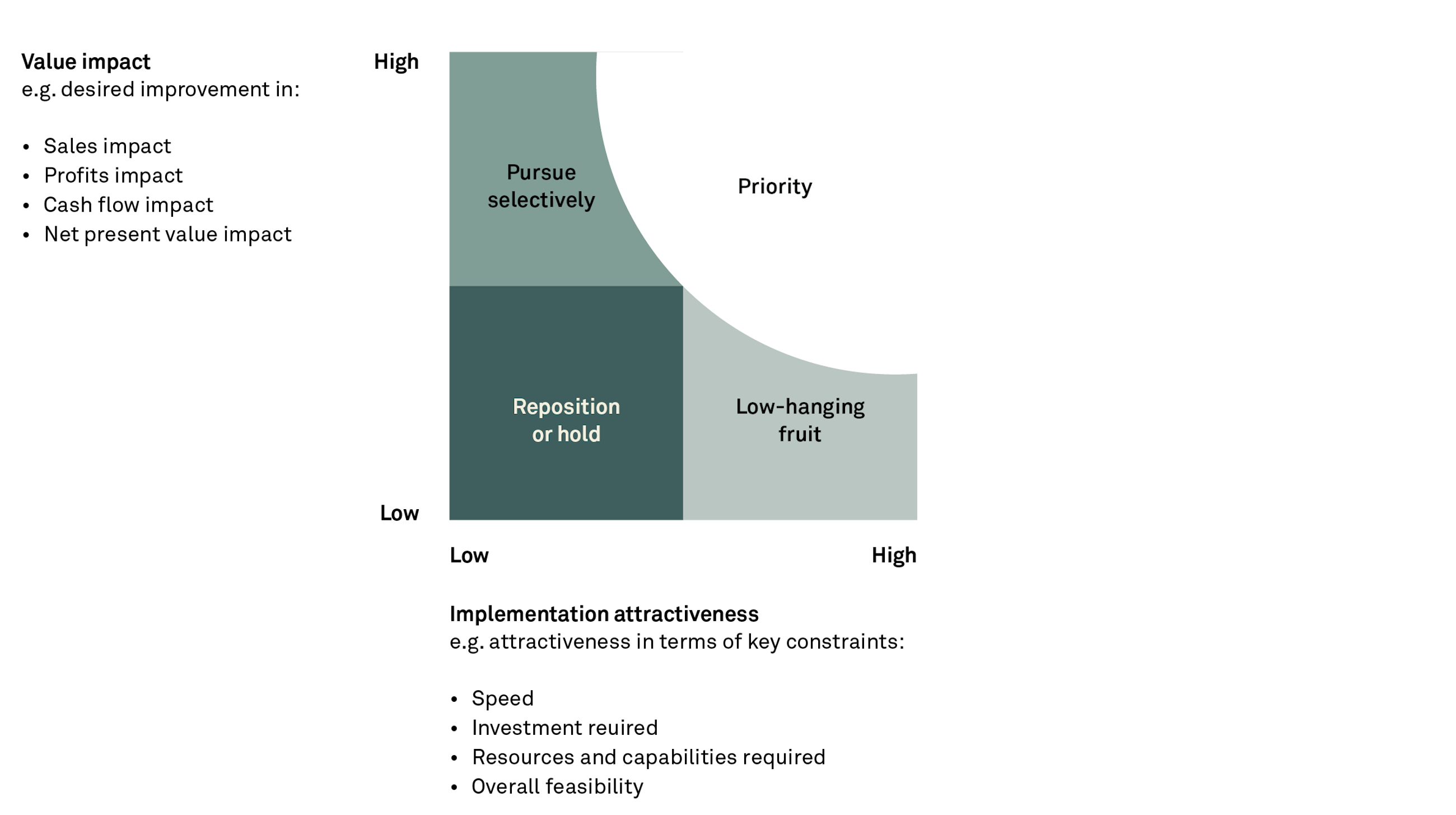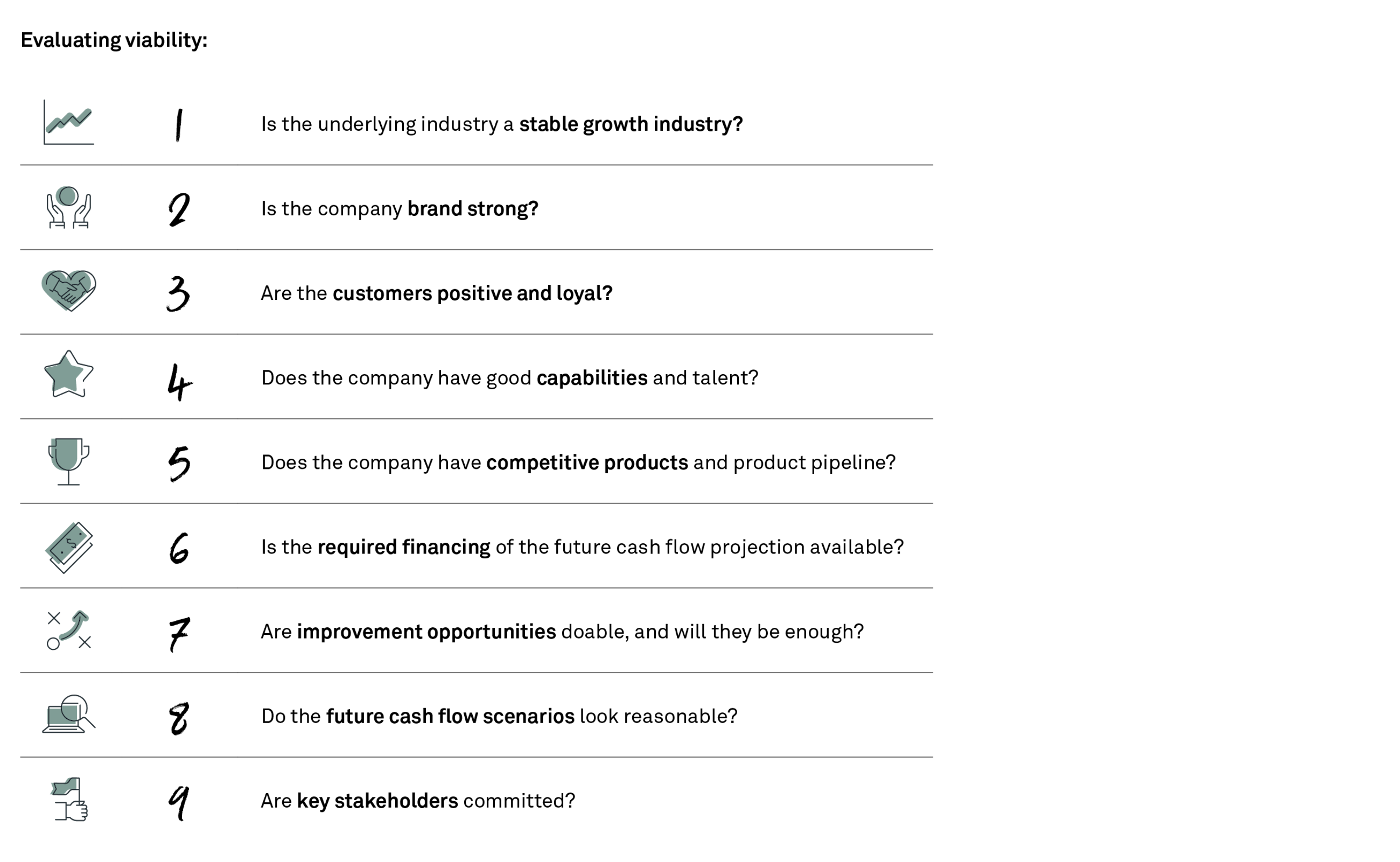You can conduct a diagnostic scan by asking the right questions such as the ones listed here. After doing so, you highlight the main priority challenge(s) that need(s) urgent resolution.
Below, we present examples of real turnaround cases and the diagnostics they have performed.
Case A
A global logistics equipment manufacturer needed to stop profit leak. The sales units were struggling to turn the equipment installation business profitable. The gross margin for the units’ projects was very low and not sustainable and varied greatly from 2% to -47%. Some of the issues found were that prices were too low, and too many discounts were given. Prices were not realistic, as they did not cover late additions and changes. Sales had previously set prices on rough calculations and then not updated them, and engineering had not answered fast enough in the past. It all boiled down to understaffed engineering, breakdown in communication between sales and engineering, too complicated portfolio – too flexible with customers’ demands/too complicated offering. The solution included: improving project portfolio management in engineering, clearly defining a robust Stage-Gate quote-to-order process, improving communication and building a collaboration culture between engineering and sales and finally tools, CRM, training and coaching.
Case B
A construction equipment manufacturer experienced flat sales despite the fact that the market was booming. Diagnostics found that the product delivery was not competitive. Only 17% of deliveries to customers were on time, supplier on-time delivery to the factory was only at a level of 61%, and there were over 20 quality issues per product. The solution to boosting sales was therefore to dramatically improve the end-to-end supply chain. This resulted in increasing productivity, decreasing lead times, decreasing inventory value while increasing on-time delivery to customers – and ultimately a considerable lift in sales and profits.
Case C
A company within the specialised engineering sector found that their revenue had dropped in the last two years. At the same time, the overall market was expected to continue to grow. The company had a strong position within their global niche market, but the market was changing, and the competition was getting tougher with higher cost awareness. The company was mainly targeting capital expenditure design business and was not strong in follow-on operational services. A closer look at the customers suggested that even though they appreciated the high quality and technical capabilities, they did not want to pay the price anymore, as there were cheaper options. Furthermore, the company, being technically very strong, was not good at building long-term customer relationships and had high overall variability in customer satisfaction. After diagnostics, the key challenge was found to be that the traditional core business attractiveness was eroding, and there was a need to refocus the company to evolve new value-added services and become a lot more customer-oriented vs building on their traditional technical inward-looking core capabilities.
Diagnosis 2: forward-looking cash flow
At the end of the day, cash is the ruling monarch, as it is needed to pay suppliers and staff and to continue operations. Succeeding in turning the business around requires, as a minimum, positive cash flow generation (from operations and/or investors) in the short term to keep the business going and in the long term to generate value for shareholders.
Therefore, it is important that you understand the cash flow situation and projections. These should contain an operating cash flow, investing cash flow and financing cash flow to give a complete view. In your cash flow projections, you should include sensitivity scenarios based in part on realistic high, medium, low and worst-case market outlook scenarios as well as likely business scenarios.







